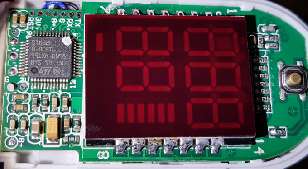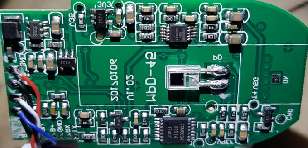Rick's b.log - 2018/12/24
You are 3.128.78.41, pleased to meet you!
Rick's b.log - 2018/12/24 |
|
| It is the 29th of April 2024 You are 3.128.78.41, pleased to meet you! |
|
mailto: blog -at- heyrick -dot- eu
See them all in the Advent Calendar 2018 playlist.
And in a land far far away, a small playground and olde village shoppe.
Perhaps my Christmas dinner of veg (peas, crunchy peas, runner beans, and broccoli), rize (koshihikari), and Frey Bentos "Just Chicken" might not sound terribly appealing. Fair enough. The Frey Bentos is a
A similar method exists where it is possible to shine a bright light directly at skin and record subtle colour variations reflected off the skin using a camera. This is the principle used by those apps that claim to take your heartrate using just your phone's camera. It is also the method used by pulse detectors such as those on various Samsung Galaxy phones (though it's a special optical sensor rather than a general purpose camera).
Of course, this sort of job sounded perfect for a cheap and simple microcontroller - and it seems like the microcontroller of choice these days is one of the ARM Cortex M series (probably an M0 core), and the device in question quite possibly one of the STM32 family...
There we go, an STM32F030C8. An ARM Cortex-M0 core with 64K Flash and 8K SRAM. Other onboard hardware is: One advanced (PWM), one basic, and five general purpose 16 bit timers; up to six serial protocols (2 SPI, 2 IIC, and 2 USART); a 12 bit ADC; up to 39 GPIOs; up to 48MHz clock rate; RTC (if 32kHz crystal provided); etc.
Of course if you're paying attention you'll have noticed the TX and RX pins just above the MCU in the above photo. I believe some of the slightly more expensive devices contain Bluetooth support, so this may be a serial datastream to send to a Bluetooth module? Might be worth investigating at some time.
Here's the other side showing the sensor, an op-amp, and power conditioning (power input is 2 AAA cells, nominally 3VDC). This photo hasn't been flipped, the text is printed back to front.
Playmobil Advent Calendar
It's the final day of the advent calendars and as such we've reached the end. This video ends with a little something special too...
GDPR: This embed uses the nocookie version of YouTube for privacy reasons.Tree
This year, we decided to decorate an actual tree. And we happen to have a fir tree that planted itself in a pot. Actually, there was a more tree shaped one down by the end of the barn, but it had sent down roots so it couldn't easily be moved.

Photos
At a nearby town to walk around a Christmas Market, I stopped for a picture of the church which I thought looked rather nice all lit up and with the reflections of recent rain.


Weirdo food
Every year I comment on the weirdo Christmas food, and this year is no exception. ☺ Bambi, zebra, wild boar, Austrians, and there was Kangaroo in the freezer. Mom told me there was also Crocodile but that was sold out (bleugh! it's a giant lizard!). Didn't see any llama this time.

tradition guilty pleasure... but I just can't imagine sitting down to a nice hunk of Zebra after a Crocodile starter...
No comment
Seriously, no bloody comment!

Pulse oximeter
I got a cheap little heart rate and blood oxygenation meter from Amazon. It clips onto the finger and works by shining a bright red light through the finger. There's a sensor on the other side.
How it works is simple yet clever. Every time your heart beats, new blood is pushed all around the body. This dissipates as used blood. So by shining a light through a thin part of the body (such as a finger), one can observe small differences in the opacity of the limb. These differences will vary greatly due to interference from light sources, tiny movement of the limb, and such. However by filtering out invalid frequencies one would be left with a still noisy signal, but one that more closely represents a pulse. More filtering and detecting the peaks will provide a periodic signal that matches the pulse. With that in mind, all that remains is to time the duration between each peak to work out the pulse rate in beats per minute.
In theory the same sort of mechanism could be used by simply pointing a video camera at somebody. The subtle variations apply also to skin, such as the face. There will be tiny differences with each heartbeat. The problem with this is that the variations are miniscule (go stare at a significant other and see if you can notice it, you probably cannot) and while a video camera may have a degree of accuracy that would allow it to 'see' such tiny differences, the main factor here is that conditions are far from ideal - people moving, makeup, lights that aren't bright enough, and mains lights spewing out 50Hz or 60Hz pulses...


And finally...
All that remains is to turn the TV off, watch "American Gods" (Amazon) or "Stranger Things" (Netflix), and pretend that the invisible-drone-universal-credit-brexit-disaster doesn't exist. And have a nice day tomorrow...even if you're planning on eating...crocodile...
No comments yet...
| © 2018 Rick Murray |
This web page is licenced for your personal, private, non-commercial use only. No automated processing by advertising systems is permitted. RIPA notice: No consent is given for interception of page transmission. |